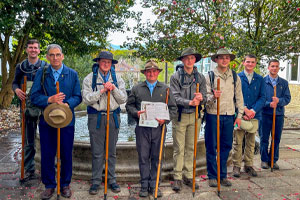
Boarding a plane for Madrid began a trip that would mark my life. For years, I had desired and dreamed of walking the path that pilgrims had trodden upon for over a thousand years to venerate the remains of Saint James the Greater, Apostle and cousin of Our Lord Jesus Christ. That dream was finally becoming a reality.
We were a decent-sized group of eight people. The majority were former students of mine, nearly forty years my junior. Upon our arrival on the Iberian Peninsula, we began our journey through the Spain of The Cid Campeador, Saint Ferdinand of Castile and Don Pelayo of Asturias.
Our first major stop was Zaragoza, where we visited the grand Basilica of Our Lady of the Pillar. This is a must-go location for the devoted Catholic. It marks the place on the banks of the Ebro River where Saint James had been discouraged and tempted to leave Spain after many futile attempts to convert the local inhabitants. Our Lady, still living then, appeared to Saint James with the pillar and encouraged him to continue his efforts. The pillar with a statue of Our Lady atop is preserved in the Basilica.
In the evening, a pre-Holy-Week procession marched down the streets of Zaragoza and ended in front of the majestic Basilica. The next day, we bought special “ribbons” that were touched to the Pilar before we made our way to the fantastic medieval city of Burgos.
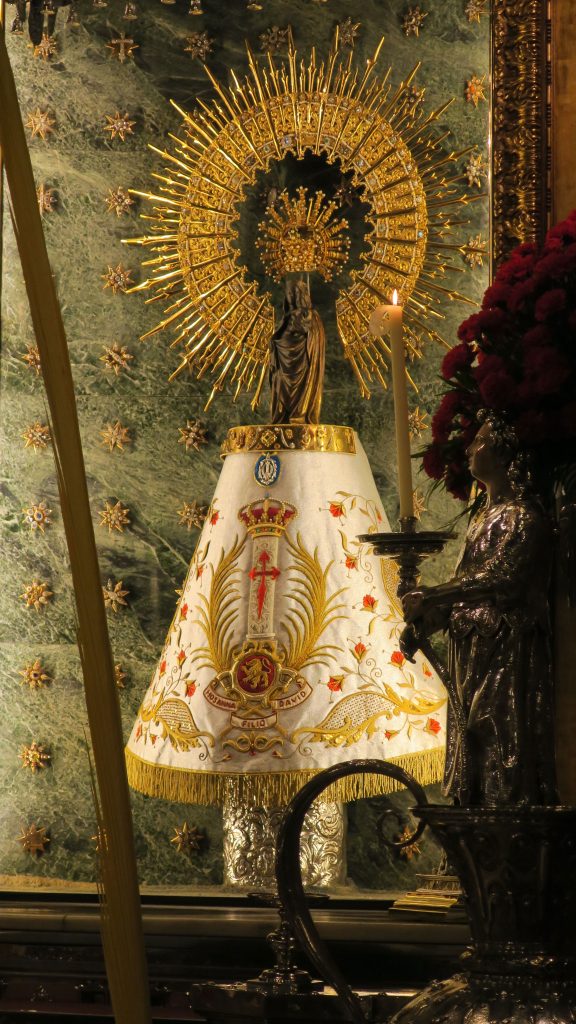
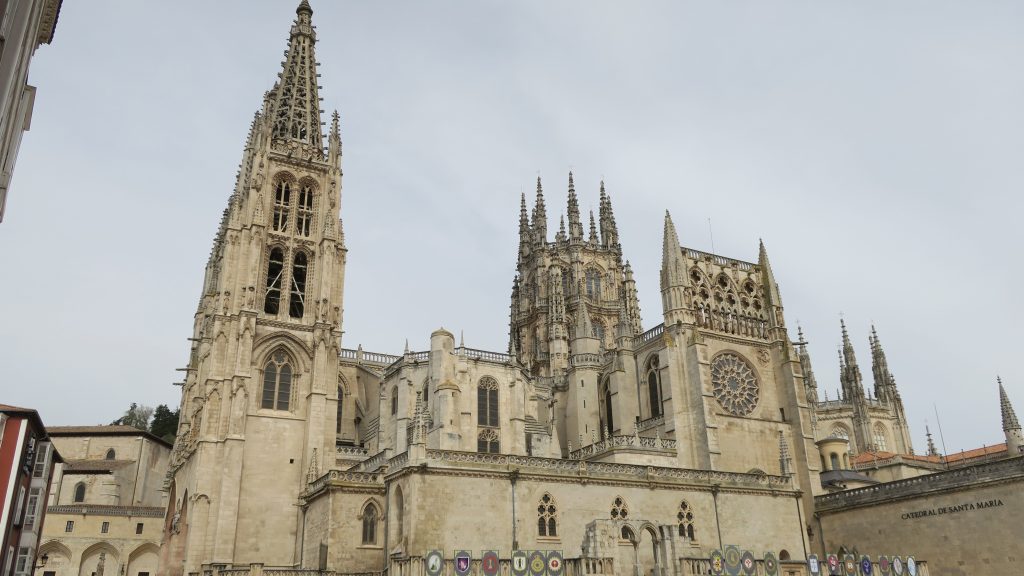
Burgos has a rich and significant past. It has a magnificent medieval square and a massive Gothic cathedral. The central nave and side altars, each more beautiful than the next, testified to the age of Faith when carvings on the altars were catechism classes and biblical history lessons in art. Devotees can recite a few prayers before the great Cid Campeador’s remains, which are buried before the main altar.
After leaving Burgos, we stopped at the city of Covadonga before starting the Camino (Way) to Saint James the Apostle’s venerable remains. Covadonga is a village in northwestern Spain, in the mountainous Asturias region.
Help Remove Jesus Bath Mat on Amazon
It is the site where Spain’s Reconquest from the Moors began in the eighth century. A nobleman named Don Pelayo gathered together a vastly outnumbered band of men to defeat an immense Islamic army near the only remaining Christian stronghold in Spanish domains.
The stronghold was a simple cave in the mountains with a magnificent statue of the Virgin known as Our Lady of Covadonga. She was the true victor in this battle that started the long seven-hundred-year reconquest of Spain.
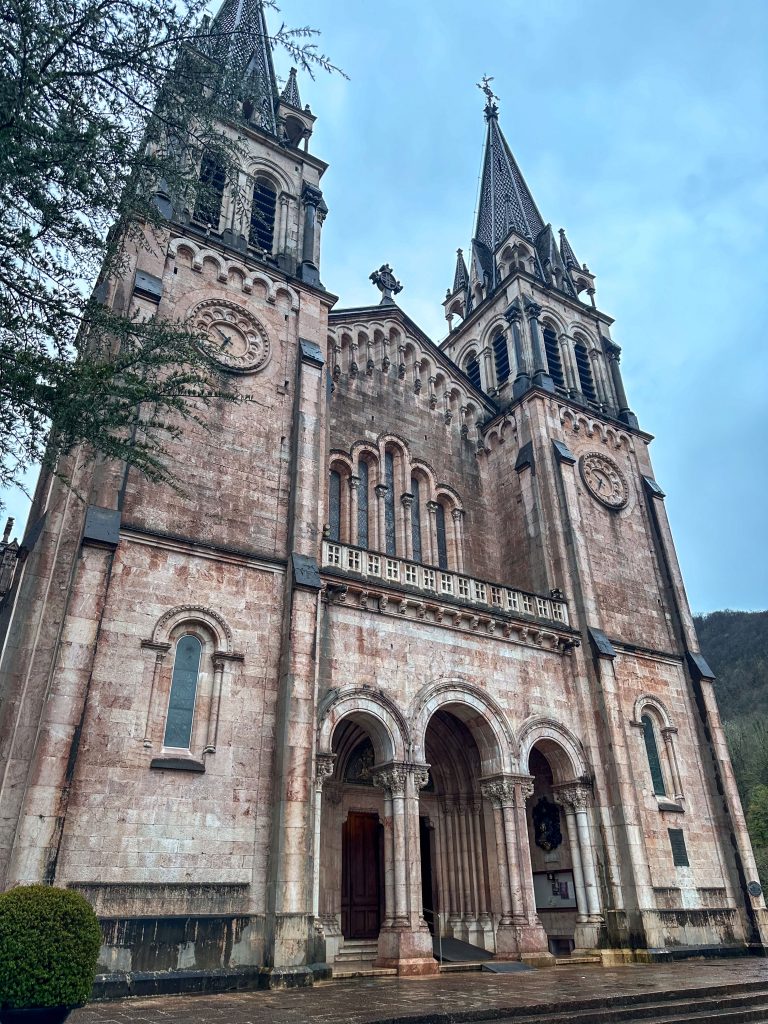
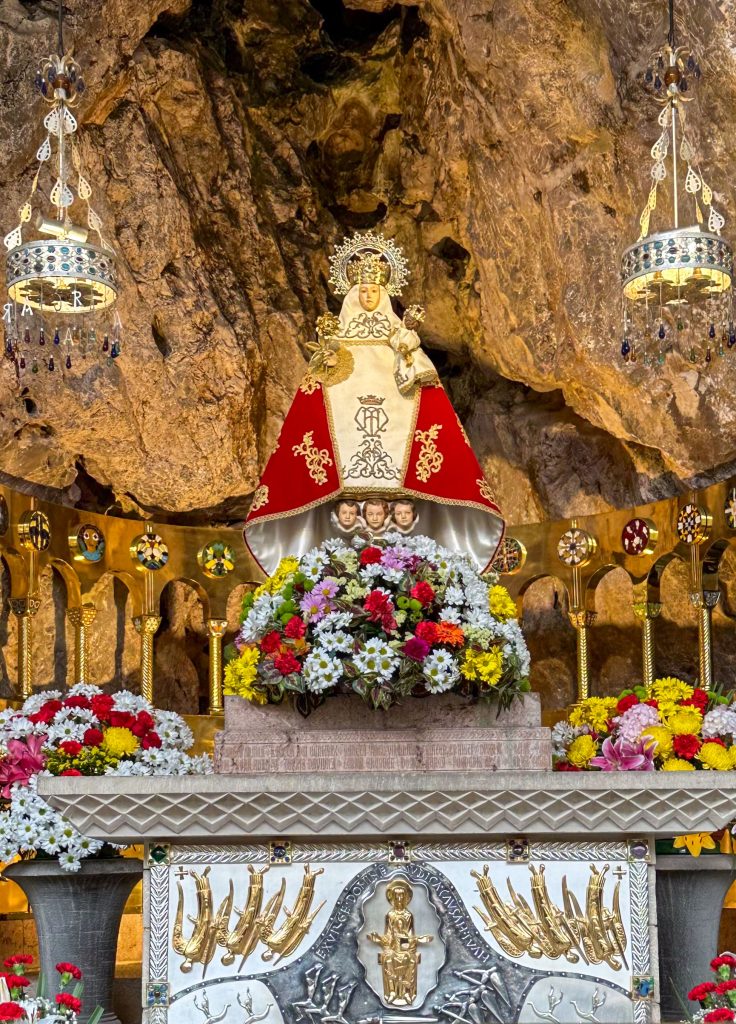
We sensed the cold mountain air blowing through parts of the cave illuminated by hundreds of vigil candles. In front of Our Lady’s noble statue, we read a four-page list of the pilgrimage intentions for the Camino. We also chanted the Little Office of Our Lady as a fitting preparation for the Camino, which would commence two days later.
Leaving the Asturias region, we were honored to visit the Cathedral of Oviedo. This cathedral houses the famous Sudarium of Oviedo, which is always displayed during Holy Week. This cloth covered Our Blessed Lord’s face underneath the Shroud. I had not expected this honor, but I found it a fantastic prelude to the Camino.
Satanic Christ Porn-blasphemy at Walmart — Sign Petition
Vila do Conde, Portugal, was the beginning of our nine-day Camino to Santiago Compostella. We started our pilgrimage after putting on our gear and tying our characteristic “Saint James Scallop shells” to our backpacks. Among the various routes, we chose the Portuguese route as the best for us.
Unfortunately, the Iberian Peninsula was experiencing its most rainfall in three years, so our Camino was destined to be wet. Putting our ponchos over our heads and backpacks became standard procedure for the nine-day adventure. Thus, the days on the Camino were long and wet but full of blessings. I had no idea of the graces that were in store for me.
All our group members carried specially made oak walking sticks tailored to each one’s tastes. My stick bore the signature of Charlemagne on one side and a specially carved Cross of Saint James on the other. It was engraved with the words “Quis ut Virgo,” which means “Who is like unto the Virgin?”
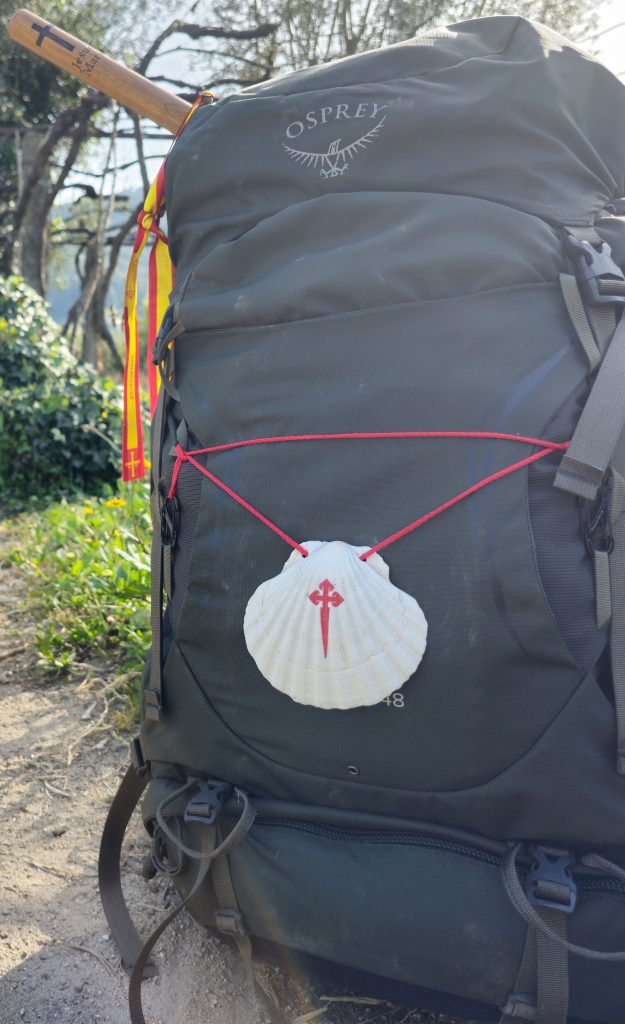
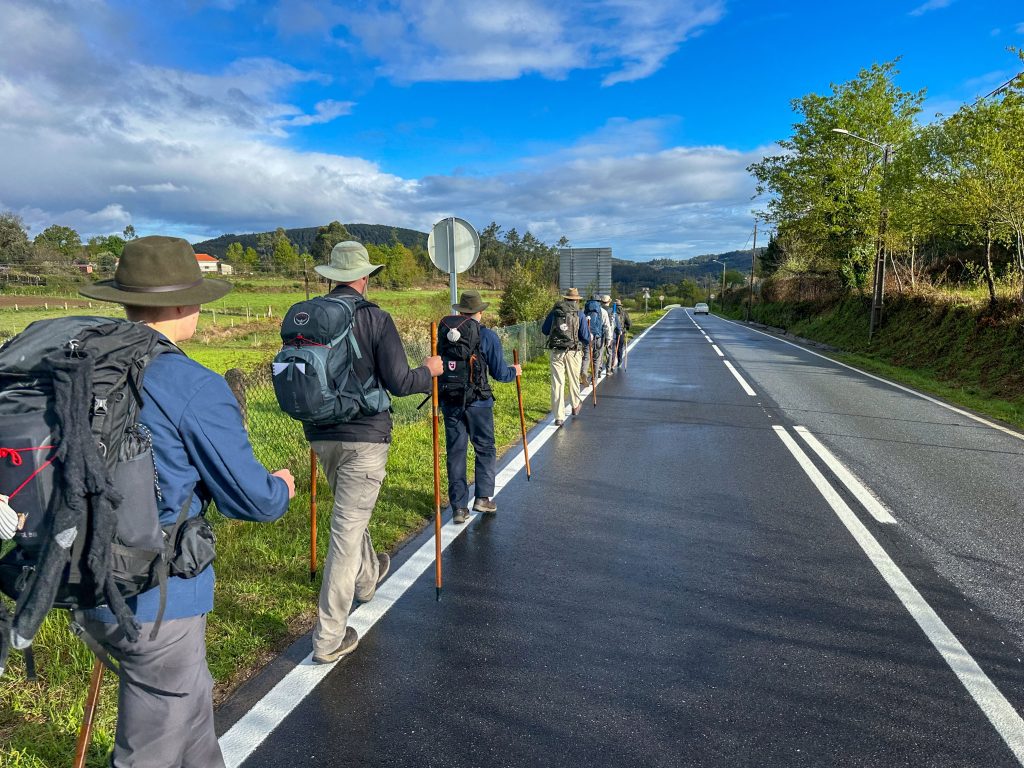
The pilgrim’s staff added a medieval note to the Camino, making it more memorable. To my surprise, the staff also proved extremely practical. Many times, it prevented me from falling and alleviated my knees while climbing steep hills.
As we plunged through the rain and mud, the days passed quickly. We experienced the true bonding that happens when comrades suffer together. During the nine days, there were no serious arguments about which way to go or other issues. I was amazed by the deference shown to me because I was the most senior member of the pilgrimage. My gratitude could not have been greater.
How Panera’s Socialist Bread Ruined Company
Prayer was a big part of the pilgrimage. Above all, we prayed for the intentions found on the four-page list we read earlier in Covadonga. We prayed the full rosary daily and said three Hail Marys inside or in front of every chapel we encountered. We also prayed short ejaculations before the numerous statues and roadside crosses along the way. Occasionally, we chanted the Little Office of Our Lady in one of the many beautiful medieval Gothic churches.
Lamentably, outside of our eight-man group, we saw no rosaries, signs of the crosses or prayers from the scores of pilgrims we met who were also doing the Camino. This lack of piety reflected the secular and atheistic modern world around us.
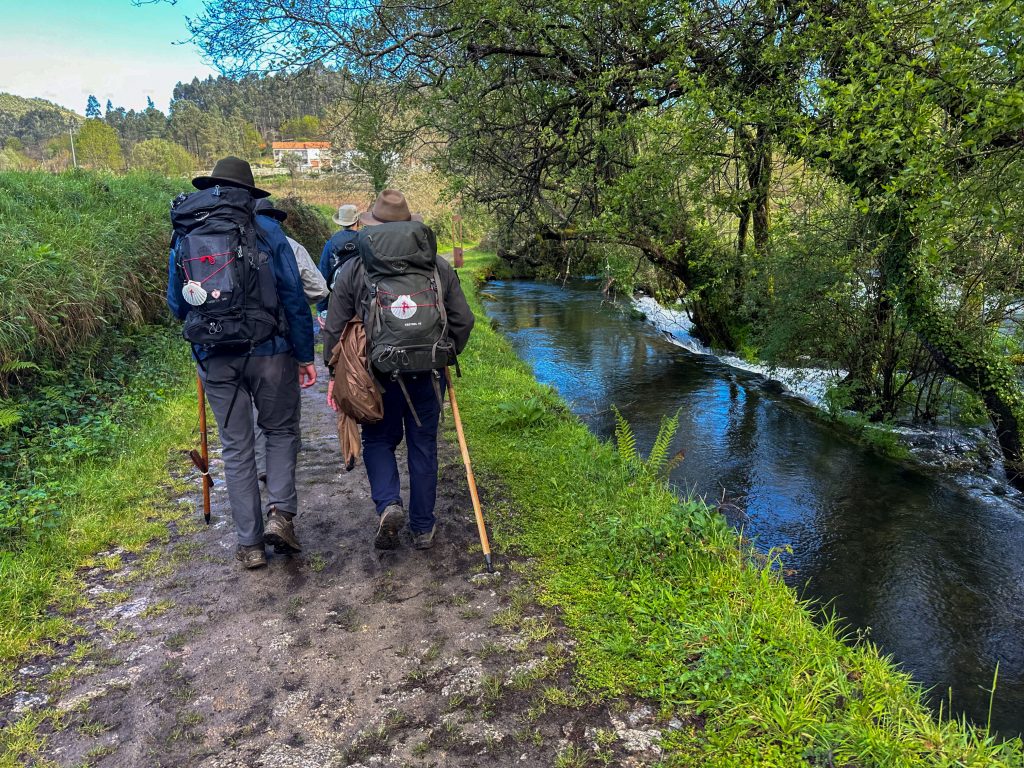
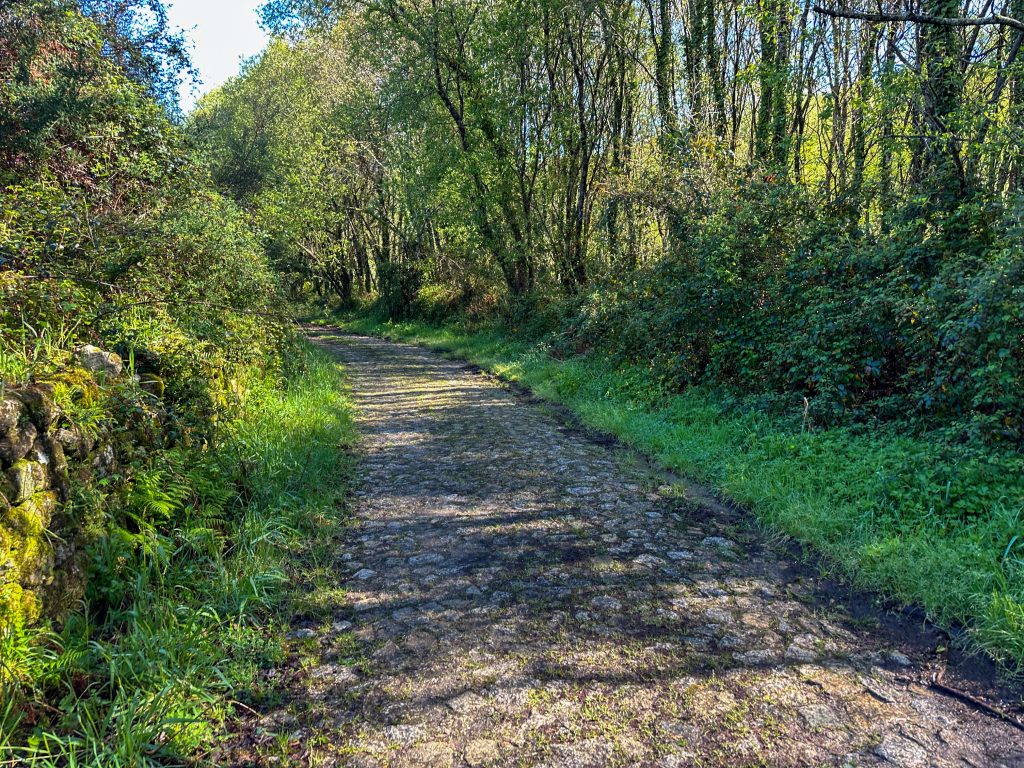
Walking through medieval streets, we felt a powerful and palpable connection with the remnants of Christian civilization. The glorious past of Christendom never affected me so profoundly as those days on the Camino. I will never forget it as long as I live.
As we crossed the Portuguese border into the medieval town of Tui, Spain, we faced a long day on the Camino, which covered twenty miles! After climbing part of an arduous hill, I sat down to rest. On a nearby wall, I noticed an expressive phrase written in Spanish and English: “No Pain, No Glory.” How true it was! How many life lessons were learned in those nine days!
What Does Saint Thomas Aquinas Say About Marriage?
On the day before reaching Santiago, we arrived at the historic city of Padron, Spain. The great Apostle had baptized Queen Lupa and many of her barbarian subjects at this site. Lacking water for the baptismal ceremony, Saint James brought forth a miraculous spring. We prayed a rosary at the spring and filled our camel packs in anticipation of our final day of the Camino.
Unlike the other days, the last day of Camino was dry and hot. We had not experienced parched throats and lips up to this point. However, it did not matter because we were anxious to cover the final fifteen miles to our goal. To make the last day more solemn, we decided to walk the first half of the day in silence. At lunch, we recommenced conversation at a spot where the towers of the great Basilica could be seen.
Finally, we pushed through the streets of modern Santiago, which were a stark contrast to the semi-medieval roads and wooded paths of our travels. After crossing a rather steep road, we beheld the majestic Basilica and Cathedral, which housed the relics of the Apostle. We descended into the main square and thanked Our Lady for arriving at the symbolic gates of Jerusalem.
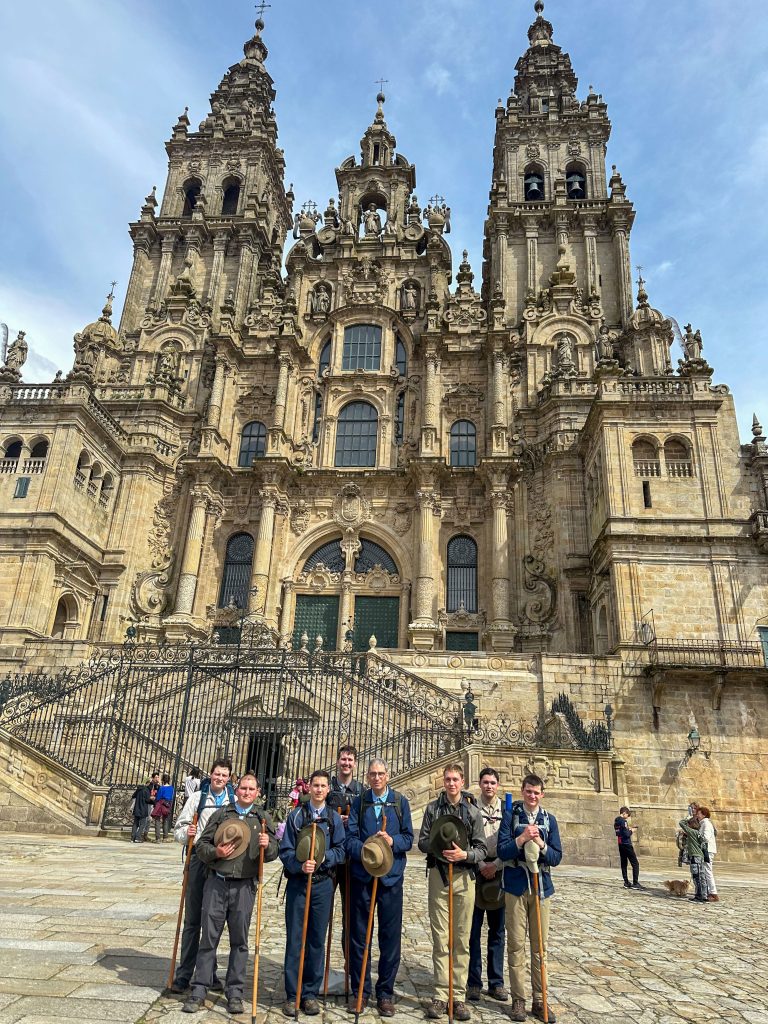
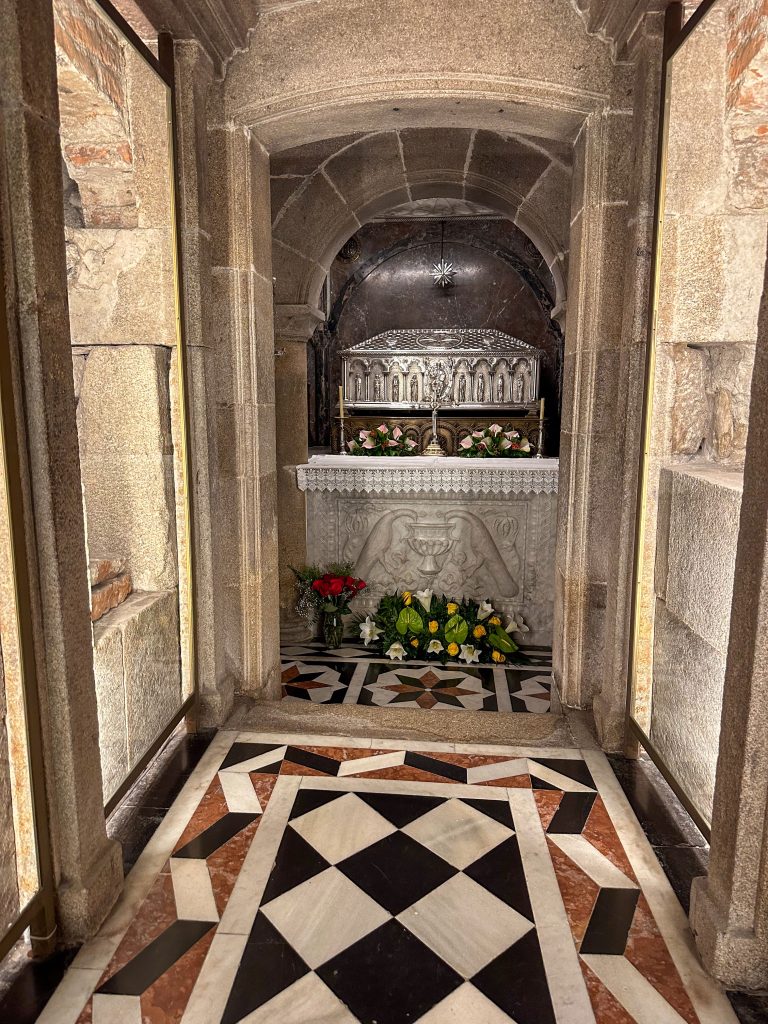
For me, it was truly a dream come true. It was the final stage of some of the happiest days of my life. We prayed three Hail Marys and shouted, “Viva Cristo Rey,” “Viva Maria Santissima,” and “Viva Santiago.” After the prayers, we registered our pilgrimage at the offices, showed our pilgrims’ passports and received a splendid document in Latin attesting to our completion of the Camino.
We later entered the ancient Basilica and prayed at the Apostle’s tomb, which is under the main altar. We then ascended the stairs to give a big hug to the statue of Saint James, which was located at the altar.
With this, the journey was complete. We began the trek back to the United States with our souls overflowing with gratitude for the graces and life lessons learned on the great Camino.
Is It Immodest to Wear Deliberately Ripped Clothes?
Like it or not, everyone needs to make a camino during life. Some Caminos in life are shorter, and some very long, but all are on Camino. If all men did their life Caminos in the grace of God, the world would certainly be a different place.
I could not end these reflections without an opportune quote from the great Catholic leader, intellectual, and man of action, Prof. Plinio Corrêa de Oliveira. His celebrated work, Revolution and Counter-revolution, could truly be called the Camino Handbook. I found an excerpt that expresses well my Camino sentiments:
“When men resolve to cooperate with the grace of God, the marvels of history are worked: the conversion of the Roman Empire; the formation of the Middle Ages; the reconquest of Spain, starting from Covadonga; all the events that result from the great resurrections of soul of which peoples are also capable. These resurrections are invincible because nothing can defeat a people that is virtuous and truly loves God.”


